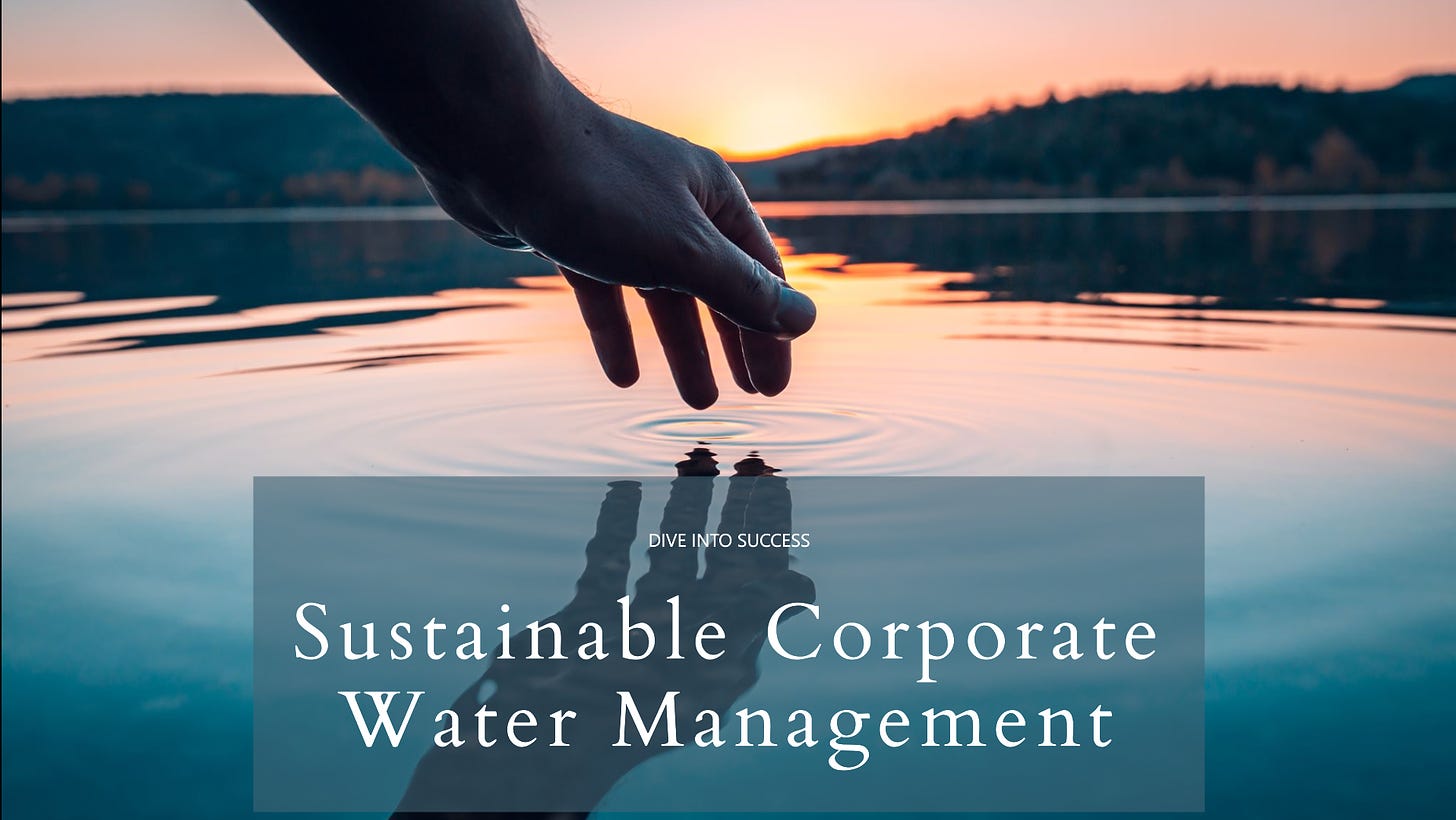Success: Sustainable Corporate Water Management
The best practices in Sustainable Corporate Water Management, fostering a blueprint for businesses to navigate the waters of environmental consciousness and profitability.
1. Understanding Water Footprint: A crucial starting point lies in comprehending the water footprint of operations. This entails assessing direct water usage within facilities, indirect usage along the supply chain, and potential impacts on local water sources. By quantifying consumption and identifying hotspots, companies can strategize efficient resource allocation.
2. Embracing Efficiency Measures: Efficiency serves as the keystone in sustainable water management. Implementing advanced technologies such as drip irrigation, greywater recycling, and low-flow fixtures reduces wastage while maximizing utility. Moreover, optimizing production processes minimizes water-intensive stages, slashing operational costs and environmental burdens simultaneously.
3. Engaging Stakeholders: Effective water management transcends organizational boundaries, necessitating collaboration with stakeholders. Engaging with local communities, governmental bodies, and NGOs fosters shared responsibility and co-creation of solutions. By incorporating diverse perspectives, companies ensure holistic approaches that resonate with both business objectives and societal needs.
4. Prioritizing Water Stewardship: Beyond mere compliance, leading corporations prioritize water stewardship, safeguarding this finite resource for future generations. This entails investing in restoration projects, advocating for policy reforms, and participating in multi-stakeholder initiatives. By assuming a proactive stance, companies fortify their reputations as environmental champions while mitigating risks associated with water scarcity.
5. Harnessing Data Analytics: In the age of digitalization, data emerges as a potent tool for informed decision-making. Leveraging analytics platforms enables real-time monitoring of water usage, early detection of anomalies, and predictive modeling for resource planning. By harnessing the power of data, companies gain agility in adapting to dynamic environmental conditions, enhancing resilience in the face of water-related challenges.
6. Promoting Transparency: Transparency forms the bedrock of credible sustainability efforts. Through comprehensive reporting mechanisms, companies disclose water management practices, performance metrics, and environmental impacts to stakeholders. This fosters accountability, builds trust, and cultivates a culture of continuous improvement within the organization and the broader industry landscape.
7. Cultivating Innovation: Innovation serves as the linchpin for sustainable progress. Companies committed to water stewardship invest in research and development to pioneer breakthrough technologies and practices. From decentralized water treatment systems to biomimicry-inspired designs, innovation drives efficiency gains and unlocks new avenues for sustainable growth.
In conclusion, Sustainable Corporate Water Management transcends mere compliance, embodying a holistic ethos of environmental stewardship, social responsibility, and economic resilience. By embracing best practices outlined above, businesses not only mitigate risks associated with water scarcity but also unlock opportunities for innovation, differentiation, and long-term success.
References:
Gleick, P.H. (2003). Water Use. Annual Review of Environment and Resources, 28(1), 275–314. https://doi.org/10.1146/annurev.energy.28.040202.122849
World Business Council for Sustainable Development. (2014). Water: A Shared Responsibility. Retrieved from https://www.wbcsd.org/Overview/Resources/Reports/Water-A-shared-responsibility
United Nations Global Compact. (2015). Corporate Water Disclosure Guidelines. Retrieved from https://www.unglobalcompact.org/library/92
Hoff, H., & Cook, C. (2019). Water: A Global Market Overview. United Nations University Institute for Water, Environment and Health. Retrieved from https://inweh.unu.edu/wp-content/uploads/2019/09/Water-Global-Market-Overview.pdf
Pacific Institute. (2020). Corporate Water Stewardship: A Framework for Success. Retrieved from https://pacinst.org/wp-content/uploads/2020/04/Corporate_Water_Stewardship_A_Framework_for_Success.pdf
Geng, Y., & Sarkis, J. (2018). Sustainability for Crises Management in a Manufacturing Supply Chain Context: Early Warning System Development. Springer International Publishing. https://doi.org/10.1007/978-3-319-62401-4_2
Hoekstra, A.Y., & Mekonnen, M.M. (2012). The Water Footprint of Humanity. Proceedings of the National Academy of Sciences, 109(9), 3232–3237. https://doi.org/10.1073/pnas.1109936109




